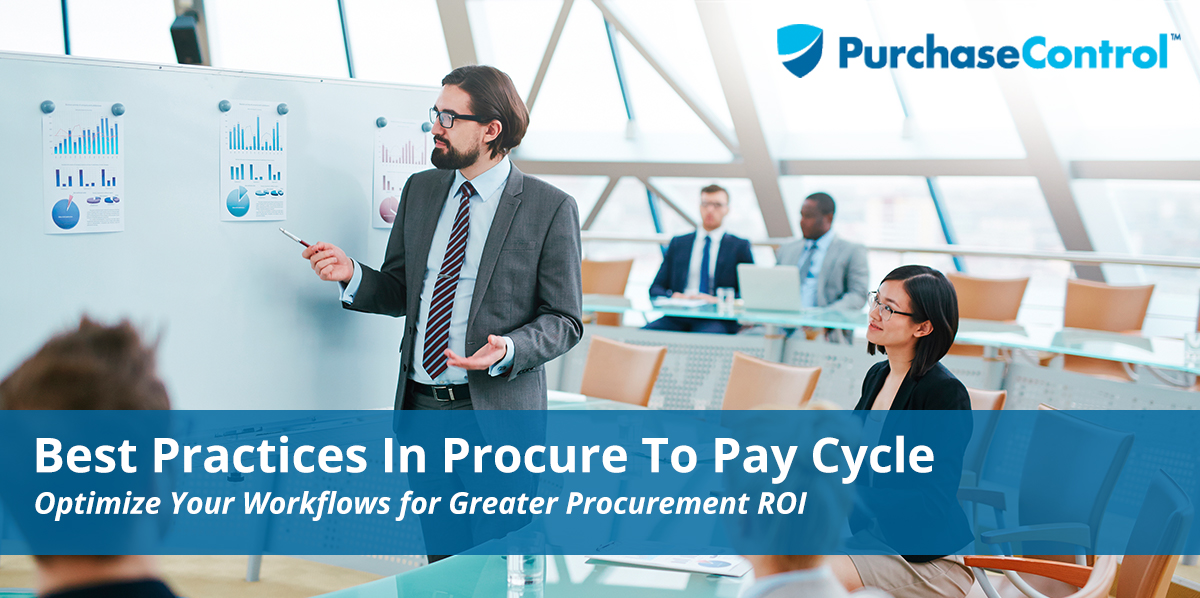Whether you’re buying essential materials for production or leveraging indirect spend to purchase goods and services that keep other areas of your business thriving, the procure-to-pay (P2P) cycle demands a certain measure of oversight, analysis, and optimization. As the primary process driving your procurement and accounts payable (AP) functions, how you spend your money, the suppliers you choose to receive it, and the overall efficiency of the process not only determines how much value and savings P2P creates for your company, but affects your company’s overall profitability, flexibility, and competitiveness, too.
Is your P2P process as efficient and cost-effective as it could be? Identifying and implementing some P2P best practices can help streamline your workflows while improving cash flow, supplier relationships, contract management, and more.
How Procure-to-Pay Best Practices Benefit Your Business
While businesses often differ in their approaches to procurement in general and the p2p process in particular, optimization and standardization through the use of best practices helps every company achieve a more effective and less costly P2P cycle, while allowing for even more improvements as time passes and areas in need of finer adjustment emerge.
Best practices touch on your procurement team and AP department as well as their relationships with the vendors that make up your supply chain. They are informed and defined by your needs—e.g., are invoices errors creating excessive penalties? Is the company failing to meet demand due to delays in the supply chain for raw materials? Are staff members failing to comply with internal purchasing procedures, and creating invisible maverick spend that throws a spanner in the works of financial analysis, reporting, and planning?, etc.— and are implemented as solutions to address those same needs.
You can think of the fundamental best practices for P2P as a kind of framework that allows your company to gain not just cost savings from efficiency and process improvements, but valuable intelligence that drives more accurate financial reporting and forecasting and, by extension, smarter decision-making and optimally strategic sourcing for every business unit supported by your procurement organization.
“To achieve the best possible results with any business process, you need the right tools. And one of the most essential for any business serious about optimizing their procure-to-pay process in today’s fast-paced, always-on marketplace is automation—specifically, a fully-developed, cloud-based procurement solution with support for data management and analysis.”
Essential Best Practices for the Procure-to-Pay Cycle
No two businesses are exactly the same. But best practices are designed to accommodate differences and allow for each company to identify areas in need of improvement, then develop and formalize workflows, protocols and processes that will create the needed gains in efficiency, cost savings, etc.
Consider implementing these P2P best practices for optimal return on your procurement dollar:
1. Slash Expenses, Errors, and Excess Stress with Automation
To achieve the best possible results with any business process, you need the right tools. And one of the most essential for any business serious about optimizing their procure-to-pay process in today’s fast-paced, always-on marketplace is automation—specifically, a fully-developed, cloud-based procurement solution with support for data management and analysis.
Considering 78% of CPOs reported cost savings as their number one priority for procurement in a 2018 Deloitte survey, tapping into the massive potential savings created by automation and artificial intelligence isn’t just a “good” idea—it’s an essential one.
Automation brings a lot to the table for every area of procurement, but it shines especially brightly in the P2P cycle. Massive gains in efficiency, cost effectiveness, and decision making can be achieved through automating common workflows, increasing data transparency, and eliminating common procurement process woes such as invoice fraud, rogue spend, and supply chain bloat through intelligent features such as built-in three-way matching and supplier relationship management/contract management.
Top-shelf procurement solutions can be standalone applications or, for even more impact, integrated seamlessly with existing enterprise resource management systems (ERP systems) to bring every business unit together for faster, mobile-friendly collaboration and easy adoption of process improvements, company-wide.
Automation and artificial intelligence let you create custom “touchless” workflows, with built-in contingencies and alerts, beginning with purchase requisitions and following all the way through to vendor payment and reconciliation of financial records. By taking the human element—and errors!—out of data entry, document routing, and three-way matching, all processes are much faster and more accurate, reducing cycle times for purchase orders and invoices. All transaction data, and all associated documents, are automatically captured and stored on a central, cloud-based server for real-time access and analysis from home, the office, or on the go. Staff is free to pursue high-value tasks instead of manually entering data or chasing exceptions.
Supply management and strategic sourcing are vastly improved as well; vendors can be evaluated and on-boarded from the first transaction, and their performance tracked using whatever key performance indicators (KPIs) matter most in your P2P cycle. Supplier relationships can be deepened and strengthened, too, thanks to faster processing times, data analysis used to identify opportunities for mutually beneficial collaborations, and stronger contract negotiation backed up by hard performance and industry data.
These are just a few of the benefits provided by a high-quality, automated procurement solution. Starting with automation, data analysis tools, and centralized, mobile-friendly data management, your team can tackle the nuts and bolts of developing specific best practices much more effectively.
2. Prioritize Standardization
Starting with the right tools is step one. The second step to P2P optimization is making sure everyone is on the same page, and following the same playbook. Standardization is essential to achieving, and sustaining, measurable improvement.
An effective standardization strategy:
- Has top-level support from the C-Suite and a cultural mandate explaining the importance of compliance to meeting business requirements.
- Thoroughly and clearly defines the roles and responsibilities for everyone involved in the procure-to-pay process.
- Provides training (with occasional refreshers) for staff, management, and the C-suite in using the procurement software and other tools used across the P2P process.
- Establishes explicit spend management policies on the importance of following procedures, including any potential penalties for failing to comply.
- Focuses on simplicity to eliminate needless complexity and confusion while still allowing for additional refinements as circumstances warrant.
3. Harvest and Leverage Data to Define and Achieve Goals
With software tools ready and your team on board, the next essential step for P2P optimization is asking, and answering, an essential question: What areas of our P2P process can be improved to help us achieve our goals?
There’s no “wrong” answer to this question; data management tools make it much easier to capture and analyze information across all areas of the p2p cycle. But you can’t measure what you can’t see, so having full visibility of your spend data, and role-appropriate access for all parties to perform analysis, is crucial. This visibility and control will allow your team to accurately measure existing performance so they can identify problem areas and develop workflows and processes to address them properly.
4. Connect and Collaborate
To be truly successful, any effort to optimize your procure-to-pay process must have complete buy-in at all levels, and provide the communication tools and training needed to minimize misunderstanding while fostering a sense of shared purpose.
With everyone operating within the framework of the eProcurement solution and following standardized protocols, it’s much easier to ensure key stakeholders can connect easily and access shared resources needed to complete something as simple as a purchase order approval or as complicated as a contract negotiation. Role-appropriate access to the central data server, available from mobile and desktop devices, facilitates communication and crushes roadblocks that would cripple a manual approval process, for example.
This “commercial camaraderie” extends to supplier management, too. Onboarding suppliers through your system’s supplier portal lets you track essential KPIs and ensure contract compliance while also making it easy for them to electronically approve purchase orders and submit invoices using e-invoicing rather than snail mail. Integrating your suppliers with your workflows improves efficiency on both ends of the process and reduces the chances for miscommunication. Plus, sharing insights can create opportunities for suppliers to suggest new markets or offer incentives and process improvements of their own.
Get More From Your P2P Cycle with Best Practices
In order to decide what’s best for your business, you need clear and accurate insights into what’s working—and what isn’t. Taking the time to identify and implement P2P best practices will strengthen and streamline your workflows, reduce costly waste, and give your procurement team the data insights they need to collaborate, innovate, and achieve continuous improvement for maximum savings, process improvements, and value creation.
Make Greater Efficiency, Profitability, and Accuracy Part of Your Procurement Best Practices
Find Out How








